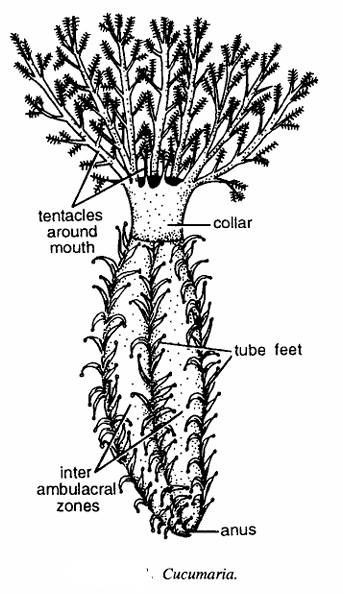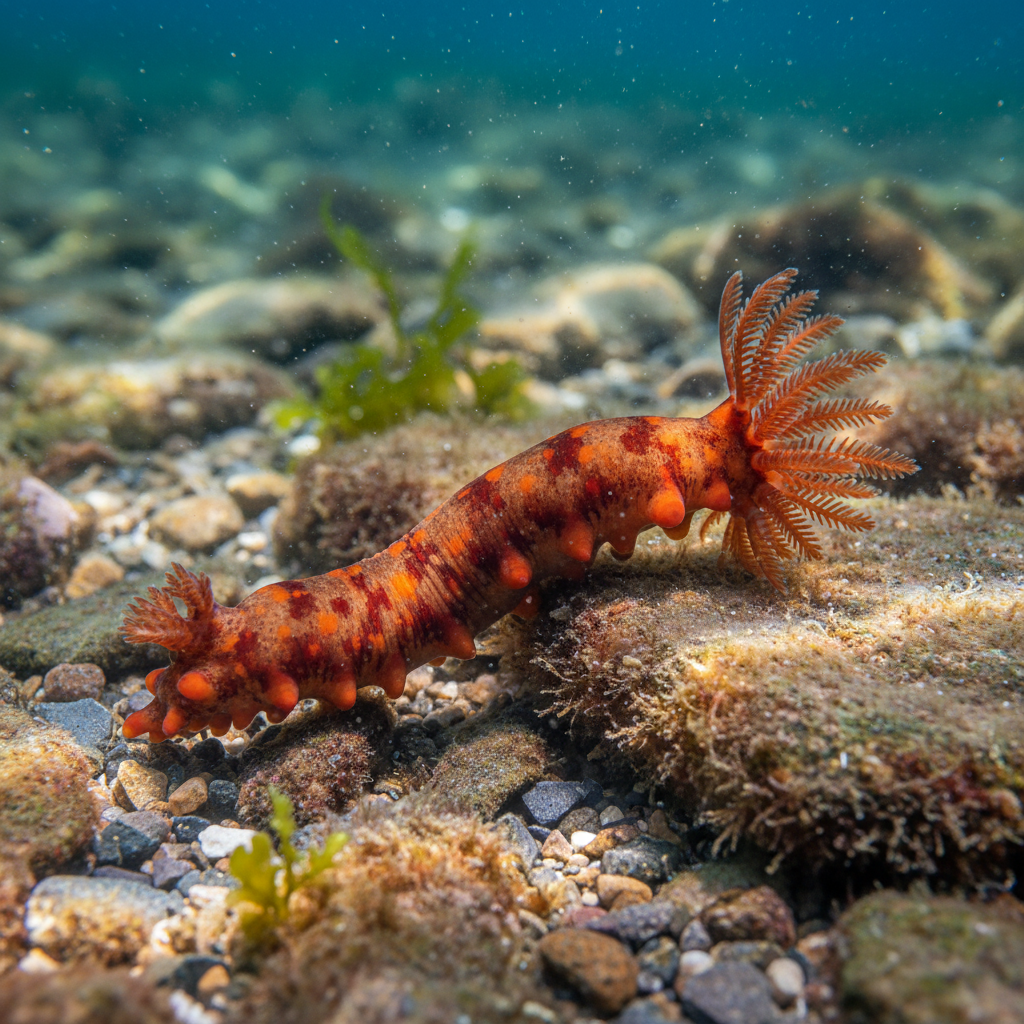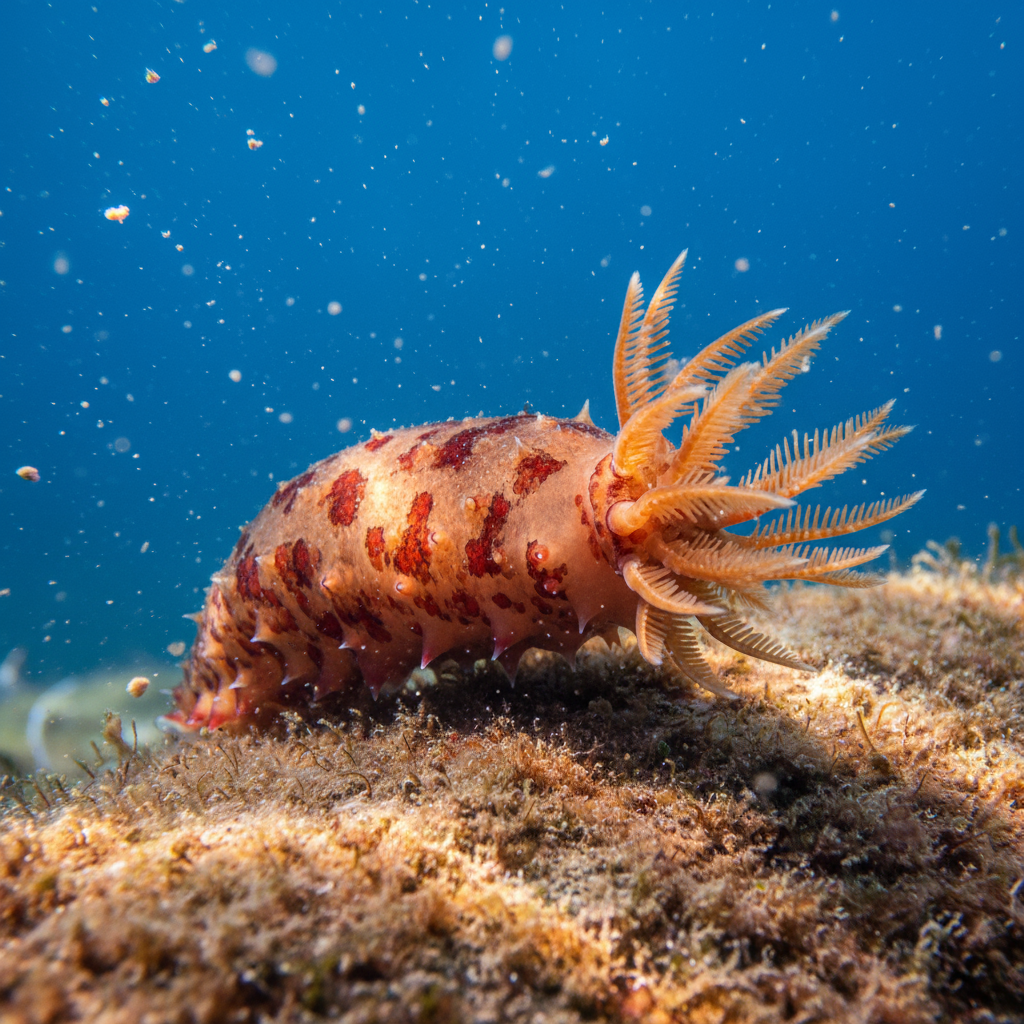Cucumaria: A Detailed Overview of the Sea Cucumber Genus
Cucumaria is a genus of sea cucumbers belonging to the family Cucumariidae within the class Holothuroidea of the phylum Echinodermata. These marine invertebrates are characterized by their elongated, soft bodies often covered with spines or ossicles. Species within this genus exhibit a wide range of colors and sizes and are widely distributed in cold to temperate marine waters. Cucumaria species play vital roles in benthic ecosystems as suspension feeders, recycling organic materials and maintaining sediment health.
Classification of Cucumaria
| Taxonomic Rank | Name | One-Line Characteristic |
|---|---|---|
| Kingdom | Animalia | Multicellular, heterotrophic marine organisms |
| Phylum | Echinodermata | Marine animals with radial symmetry and calcareous ossicles |
| Class | Holothuroidea | Soft-bodied sea cucumbers with elongated body and tentacles |
| Order | Dendrochirotida | Sea cucumbers with branched tentacles for suspension feeding |
| Family | Cucumariidae | Sea cucumbers with leathery skin and branched oral tentacles |
| Genus | Cucumaria | Suspension-feeding sea cucumbers with diverse coloration |

Habitat and Habit
Cucumaria species are found in shallow to moderately deep marine habitats including rocky coasts, kelp forests, and benthic zones rich in organic material. They commonly attach themselves to hard substrates or lie partially buried in sediments. These sea cucumbers are suspension feeders, using their branched oral tentacles to capture plankton and detritus suspended in the water column.
They are mostly sedentary but can move slowly using tube feet on their ventral surfaces. Many species are adapted to areas with moderate to strong water currents which aid in food capture.
Geographical Distribution
The genus Cucumaria has a broad distribution primarily in cold and temperate waters of the northern hemisphere. Notable species such as Cucumaria frondosa (orange-footed sea cucumber) are abundant in the North Atlantic Ocean and along the coasts of North America and northern Europe. Other species occur in the northeastern Pacific and various global temperate marine regions.

General Characteristics
- Commonly called as sea cucumber.
- Body is elongated horizontally along the oral aboral axis.
- Colour of the body may be whitish, reddish or brown.
- Oral end contains a whorl of 10 dendritic bushy, pinnately branched tentacles surrounding the terminal month.
- Tentacles are modified tube feet.
- Anterior region is called as collar which contains mouth at anterior extremity.
- Rest of the body differentiated into 5 ambulacral and 5 inter ambulacral zones.
- Ambulacral grooves are covered and run longitudinally.
- Tube feet, when present, usually possess suckers and are either arranged in rows or are irregularly scattered. Body wall which is dermo-muscular contains very small separate ossicles.
- There is a single genital aperture, middorsally situated between the bases of two adjacent inter-ambulacral tentacles near mouth.
- Animal rests on the so-called ventral surface, which is flattened and paralleled with oral aboral axis of the body, and is pentaradiate.
- It has 3 ambulacral areas trivium and forms s;)le. Dorsal surface with 2 ambulacral areas is called as bivium. Anus is aboral wit..
- lt paired respiratory trees.
- Larva are Auricularia Doliolaria.
- Body: Elongated and cylindrical with a leathery skin often covered with small ossicles or spines.
- Color: Varies from orange, reddish, brown, to black depending on species; some with speckled or mottled patterns.
- Tentacles: Typically ten branched, bushy oral tentacles used for suspension feeding.
- Tube Feet: Arranged in rows along the body, aiding slow locomotion and substrate attachment.
- Size: Adult sizes range from about 10 to 50 cm, depending on the species.
- Internal Anatomy: Contains a single branched gonad and possesses impressive regenerative abilities.
Special Features
Many Cucumaria species show remarkable regenerative capacities including the ability to regrow lost tentacles and internal organs. Their bodies contain collagen allowing rapid change between solid and liquid tissue states, which aids in defense and mobility.
They can eviscerate their internal organs as a defensive mechanism, later regenerating them. The genus exhibits sexual dimorphism with sexes distinguishable by gonopore morphology on the oral tentacle crown.

Behavior and Ecology
Cucumaria sea cucumbers filter suspended food particles from the water using their tentacles, playing an important role in nutrient cycling and water purification in benthic ecosystems. Their slow movement and ability to anchor themselves using tube feet help them thrive in dynamic current environments.
Predators include fish and humans, the latter harvesting certain species for culinary and medicinal purposes in Asia. Reproduction involves release of gametes for external fertilization, with planktonic larvae developing into benthic juveniles.
References
- https://en.wikipedia.org/wiki/Cucumaria
- https://www.sciencedirect.com/topics/agricultural-and-biological-sciences/cucumaria
- https://en.wikipedia.org/wiki/Orange-footed_sea_cucumber
- https://pmc.ncbi.nlm.nih.gov/articles/PMC7281287/
- https://www.gov.nl.ca/ffa/files/research-development-fdp-pdf-sea-cumcumber.pdf
- https://racerocks.ca/cucumaria-miniata-orange-sea-cucumber-the-race-rocks-taxonomy/
- https://www.marlin.ac.uk/species/detail/1425
- https://www.inaturalist.org/taxa/117695-Cucumaria-miniata
- https://inverts.wallawalla.edu/Echinodermata/Class%20Holothuroidea/Cucumaria_piperata.html


Pingback: Holothuria | Zoologyverse | 2025
Pingback: Thyone | Zoologyverse | 2025